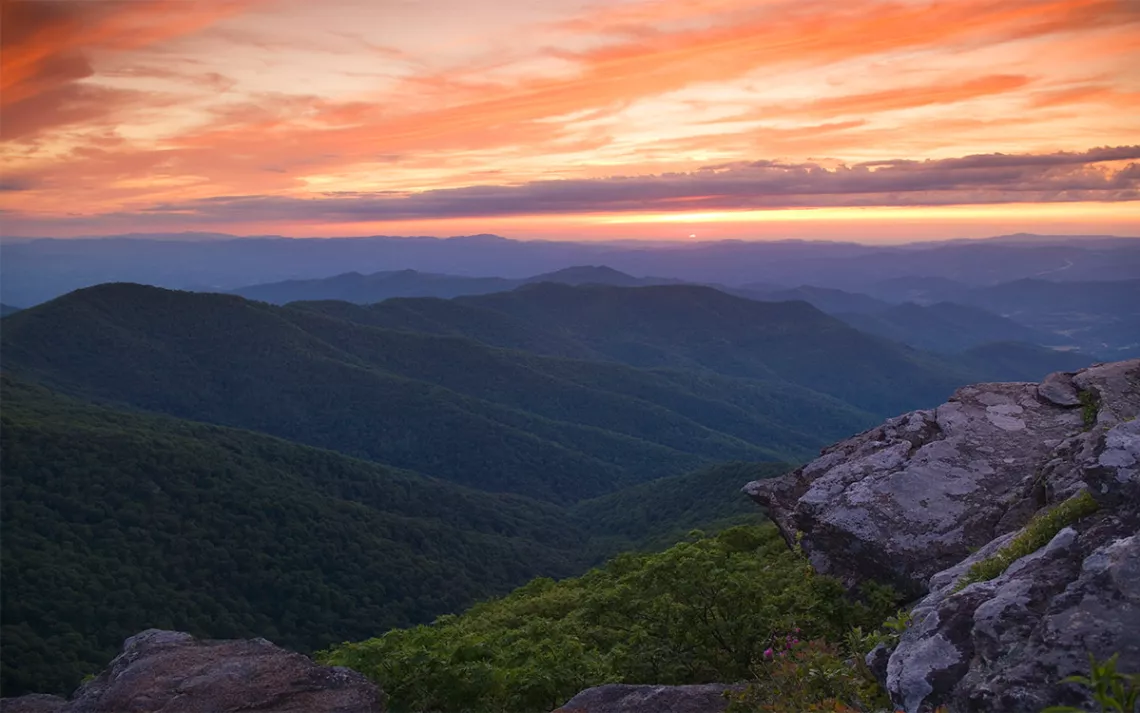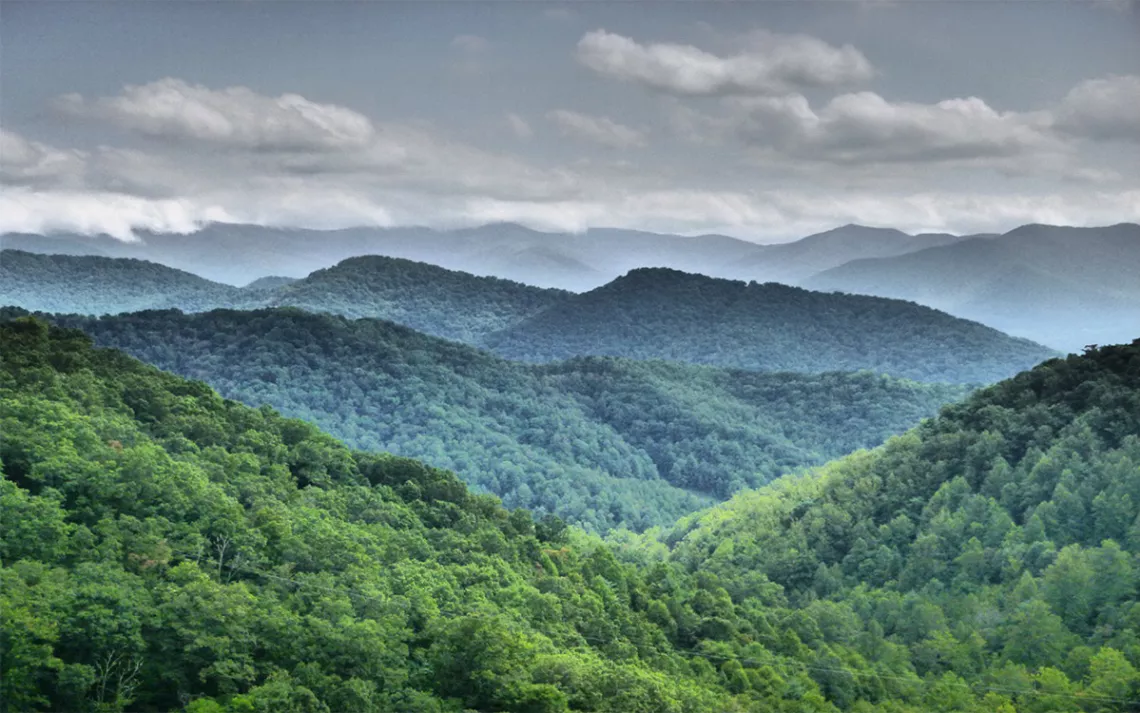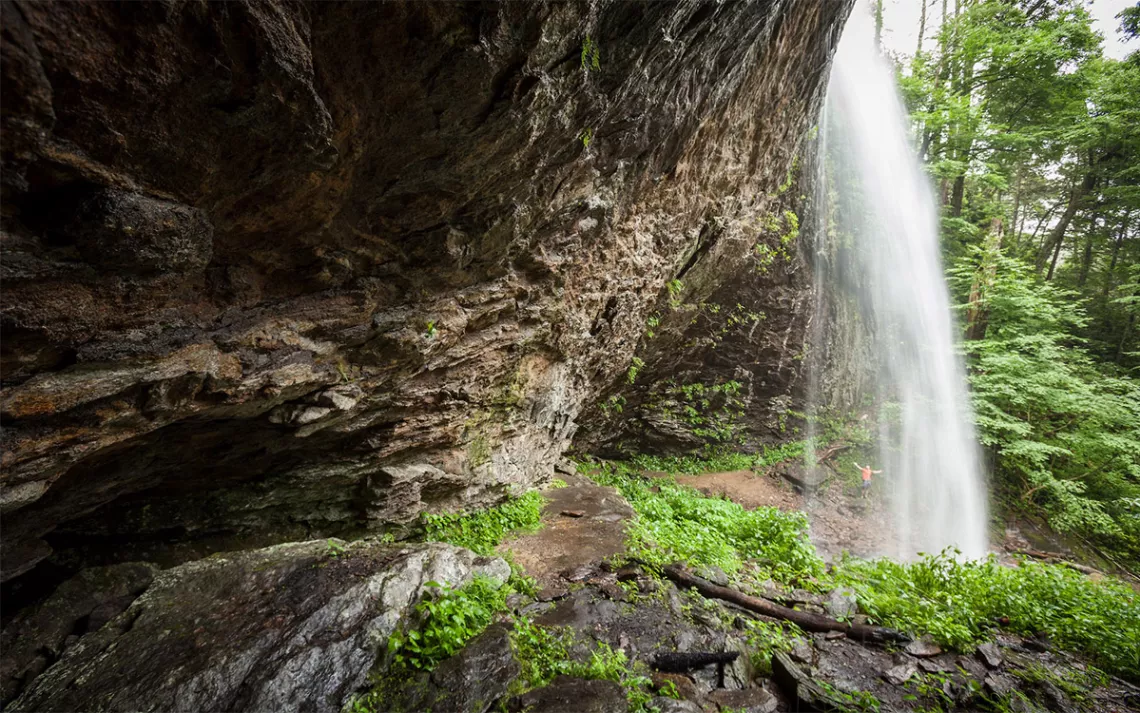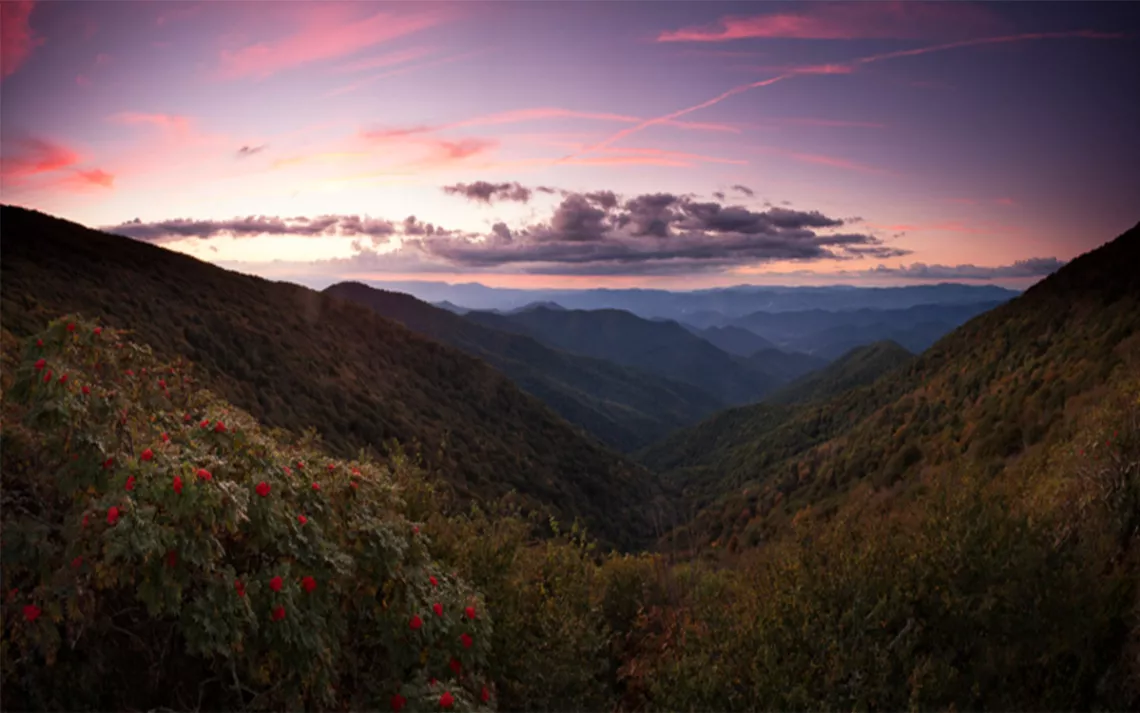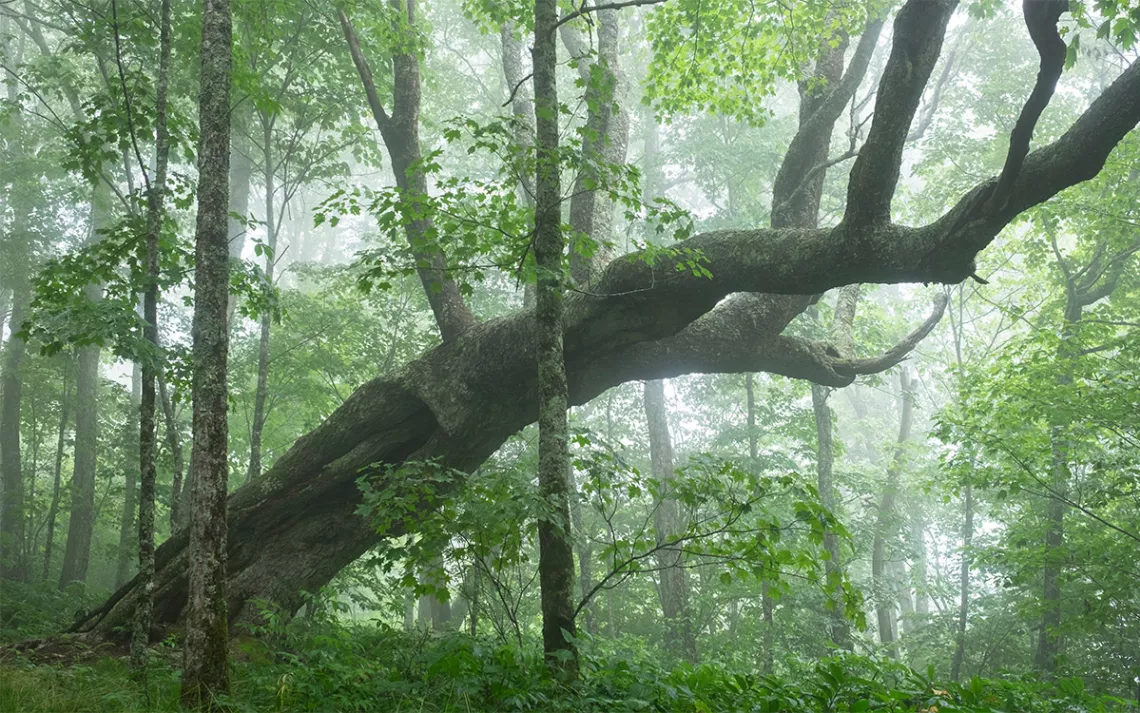North Carolina Needs More Wilderness
The Big Ivy watershed would be a good place to start
Photos courtesy of Steven McBride
People tend to think “wilderness” is something you can only find in Alaska, or maybe some towering western mountain range. But just 30 minutes from Asheville, North Carolina, where the Big Butt Trail traverses the rim of the Big Ivy watershed in the Pisgah National Forest to a lofty ridge, advocates are campaigning to win that designation for more than 7,000 acres. A portion of the area is already set aside as a Wilderness Study Area, but now there’s a push to upgrade it to America’s highest wildland status.
“It’s one of the largest old-growth forests in the East and one of the most beloved. It deserves permanent protection,” says Friends of Big Ivy co-organizer Will Harlan, whose organization (along with the Sierra Club’s North Carolina Chapter) is dedicated to protecting the secluded section of the Pisgah National Forest. The roughly 3,000 acres of old-growth trees there is among the largest such tracts in western North Carolina, survivors of the industrial logging that has decimated most of the state’s western forests.
Whether the Big Ivy takes the next step toward wilderness status is in the hands of the U.S. Forest Service. Federal rules require that the agency identify, evaluate, and recommend land suitable for wilderness preservation as part of the region’s land management plan, which began revisions in 2012. Once completed, the plan will determine how more than 1 million acres within two western North Carolina national forests—Pisgah and Nantahala—are managed for the next two decades. In all, the Forest Service has inventoried and evaluated over 300,000 acres for their wilderness characteristics.
“There are a significant number of wild places in the Nantahala and Pisgah that lack permanent protection,” says Josh Kelly, a biologist with the North Carolina–based conservation organization MountainTrue. “But it’s about the place, not necessarily the number of acres.”
The roughly 14,000 acres of federal land in the Big Ivy is one of those places, Kelly believes. Just 18 miles north of Asheville, Big Ivy is located within a steep watershed that includes streams running with native brook trout, stunning waterfalls, and summits reaching 6,000 feet. Harlan says that the watershed is one of the wildest and most ecologically significant portions of Pisgah National Forest, providing a haven for dozens of rare and endangered species.
Among the public land in the watershed, the 2,380-acre Craggy Mountain Wilderness Study Area was designated by Congress as part of the North Carolina Wilderness Act of 1984, which added 68,700 acres of wilderness throughout the state. Since then, no wilderness has been added in North Carolina, and in fact defenders of Big Ivy have had to fend off repeated threats to log unprotected portions of the forest. As recently as February 2015, representatives of the U.S. Forest Service attended a meeting—at the request of Friends of Big Ivy—to answer a barrage of heated questions from several hundred people about proposed management changes that were interpreted as leaving much of Big Ivy vulnerable to future timber harvesting.
In the summer of 2018, the Asheville City Council passed a unanimous resolution endorsing a proposal to permanently protect the Big Ivy. The Buncombe County Commission passed a similar resolution—urged on by a large crowd of supporters organized by the Sierra Club—in 2016. “These particular resolutions have incredible importance for the forest plan revision,” said Harlan. “The public has been overwhelming supportive of permanent protection.” The proclamations are particularly weighty, he said, since the majority of residents of western North Carolina live in Buncombe County, where Big Ivy would become the county’s only federally designated wilderness.
While longtime residents with deep roots in nearby communities are among Big Ivy’s supporters, few issues have stirred up more debate in the region than consideration of future wilderness designations. Hunters are among those opposed, as are some wildlife advocates. Because of a unique confluence of climate, elevation, hydrology, and geography, the southern Appalachians are among the most biologically varied places on the continent. To manage this diversity, some wildlife advocates champion an increase in the amount of early successional habitat across the landscape, including grasses, shrubs, and young trees that provide food and habitat for a range of species. Some have expressed concern that wilderness designation might stymie such attempts to manage the forest.
Richard Mode, a representative of the North Carolina Wildlife Federation and a participant in the forest plan revision, said his organization represents a broad range of wildlife enthusiasts, from hunters to birders. “We know that both game and nongame species are declining because of our full canopy forest. We are an active management organization—we believe in timber practices, thinnings, using motorized equipment, managed fire,” said Mode. However, “there are members within our organization that value wilderness characteristics. Part of our goal is to sit down at the table and work with other stakeholders.”
“There are places in western North Carolina where logging may be appropriate, but Big Ivy isn’t one of them. It’s far more valuable as an intact forest,” counters Harlan. “We want to keep Big Ivy just the way it is: wild, scenic, adventurous, and uncut.”
An indication of the future of Big Ivy and other wild places in North Carolina’s mountains will come later this summer, when the Forest Service presents its draft land management plan and draft environmental impact statement, which may or may not include new recommendations for wilderness. Following public input, a final management decision is scheduled for 2019. That, however, is just the first hurdle: Grassroots support will be required once again to encourage legislation that, by custom, originates from the local member of Congress.
 The Magazine of The Sierra Club
The Magazine of The Sierra Club
